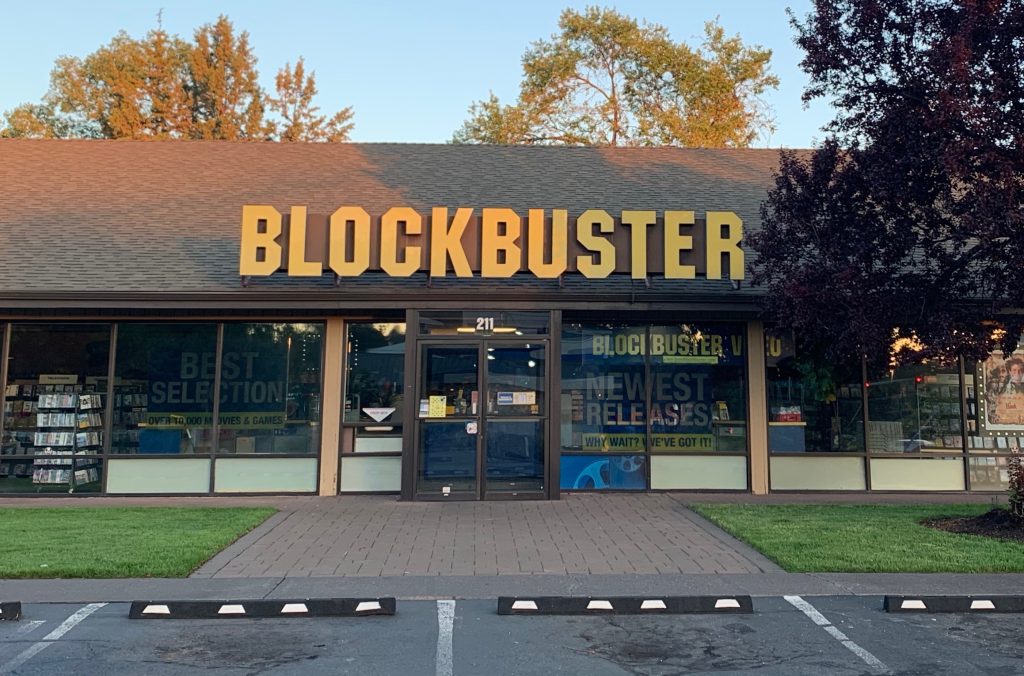Companies who failed to innovate are like characters in Shakespearean tragedies: their hubris became their downfall. The business industry is chock-full of horror stories and cautionary tales about them.
With that in mind, enterprises nowadays need to continue adapting to the increasingly fast-paced changes in the industry. That is if they don’t want to take the road that many extinct businesses. You’ll recognize many of these famous companies that went out of business, or significantly declined due to their inability to keep pace with change.
What can we learn from these companies that failed to change with the times? What are the trends today that organizations need to keep an eye on? Let’s dive into why companies fail to adapt and open up to the changing business climate.
Companies Who Failed to Innovate
As Phil McKinney, author of Beyond The Obvious and CEO of CableLabs, once said: “Without a robust and resilient innovation strategy, no company can survive.”
Indeed, failure to innovate drastically reduces the chance of enterprises to weather sudden changes in the economic climate. Case in point: Bloomberg reports some 260 businesses and companies that declared bankruptcy this year due to the COVID-19 pandemic. Then again, this pandemic was unprecedented, and even enterprises that already adapted remote working technologies were also caught off-guard.
But even before COVID-19 hit, there were already stories of massive companies taking a hit and sinking hard. And often, they did it to themselves, whether by ignoring the signs of the times or by being too stubborn and insistent with outdated business models.
We need not look far to see examples of these companies that failed to innovate. Here are some of them:
Blockbuster
A lot of people blame the rise of the Internet and digital video distribution for the downfall of this once-massive video-rental company. But as the aptly-titled, first-hand account of a former Blockbuster employee states,
“the internet didn’t kill Blockbuster, the company did it to itself.”
Jonathan Salem Baskin, the author of the Forbes article, said he “worked at Blockbuster in the mid/late 90s, so I had not only a front-row seat, but a small speaking role in the unfolding drama.” Here’s a summary of what happened that led to Blockbuster’s demise:
The company was the leading video-rental company during the early 2000s, raking in about $6 billion in revenue at the peak of their fame in 2004. They thought Netflix’s early strategy of shipping DVDs to their customers wouldn’t hold a candle to their brick-and-mortar establishments. And when Netflix’s CEO Reed Hastings proposed a partnership to Blockbuster CEO John Antioco, the latter turned it down. Hastings’ idea was to have Blockbuster promote Netflix in their stores, while the latter returns the favor online. But Antioco thought it was ridiculous, relegating Netflix’s business model as a “niche business”.
We all know how the story ends: Netflix now has an estimated net worth of $125 billion and is one of the biggest on-demand streaming service providers. Meanwhile, Blockbuster filed bankruptcy in 2010 and is now reduced to a single-store, Airbnb attraction in Bend, Oregon.
Kodak
The 20th century was a magical time for this camera technology company. Kodak dominated the photography industry and the photographic film market. The reason for their downfall: fear.
Don Strickland, former vice-president of Kodak, admitted: “We developed the world’s first consumer digital camera, but we could not get approval to launch or sell it because of fear of the effects on the film market.” Yes, you read that right: Kodak was the creator of the first digital camera.
Well, technically, it was their engineer, Steve Sasson. In an interview, Sasson reveals that in 1975, he invented the first digital camera. Even though it was “as big as a toaster”, the technical people on the Kodak team loved it. The company’s leaders, on the other hand, were apprehensive.
“It was filmless photography, so management’s reaction was, ‘that’s cute—but don’t tell anyone about it,” recalls Sasson. The company started the digital revolution in photography, but completely missed it because they were too busy focusing on the success of film photography. In the end, the enterprise, once considered “the Bell Labs of chemistry”, was forced to file bankruptcy in January 2012.
Xerox
Here’s a piece of trivia for you: Xerox actually invented the first personal computer.
But then-CEO David Kearns, along with the company’s management, thought Xerox’s future lay on copy machines. They were also convinced that going digital was going to be “too expensive”. And so they ignored the product they invented that was, in hindsight, way ahead of its time.
The book called Fumbling the Future: How Xerox Invented, then Ignored, the First Personal Computer, written by Douglas K. Smith and Robert C. Alexander, explained this in further detail. But basically, the message is this: sometimes, technology fails, and enterprises cannot perpetually rely on the same technology to generate revenue. Something that the management at Xerox failed to see.
Currently, Xerox is still up and running. However, they recently dropped their hostile takeover bid for personal computer company HP, citing the COVID-19 pandemic as one of the reasons.
A Lack of Innovation is a Heavy Price to Pay
Many believe companies that failed to change with the times froze and sank because of huge and abrupt economic shifts. But the truth is, companies often don’t fail because of paralysis. Successful companies do not freeze in the face of big changes; quite the contrary, they make a flurry of responses. However, the question now is whether the responses were effective or not. Donald Sull from the Harvard Business Review calls this phenomenon active inertia. He defines it as “an organization’s tendency to follow established patterns of behavior—even in response to dramatic environmental shifts.” Companies become stuck on outdated ideas, mindsets, and processes that provided them success in the past. This causes them to ignore innovation and, instead, double down on their tried-and-tested practices.
The problem is, these kinds of responses don’t work, just like what happened to Blockbuster, Kodak, and Xerox. Blockbuster ignored Netflix’s strategies and proposals, doubling down on their physical stores. Xerox ignored the advanced digital communications technology they invented and focused on their paper copiers. Kodak not only ignored the digital camera they invented — they even tried to hide its existence!
Studies have also revealed that about three-quarters (75%) of change initiatives flop. Mainly because they either don’t give the desired results, or they fail from the get-go. It’s even more difficult to implement organizational changes when active inertia is in play.
Strategic frames – the mindset that supposedly guides company managers – become blinders and restrictions. Processes, which should supposedly evolve, set, and harden into routines. The relationships established between enterprises and their stakeholders and customers turn into shackles, limiting company flexibility. The organization’s values, the beliefs that inspire and unify, become rigid rules and dogmas.
These are the hallmarks of active inertia, and these become the leading causes of a company’s failure to innovate.
The Deskless Revolution: A New Change
Now, these turbulent times have given rise to a new kind of technological advent: the deskless revolution.
Put simply, it is the emergence of a modern workforce — employees that are not bound by traditional office settings, such as field operations and remote working staff. Aside from the advancement of communication technologies, the recent onset of the COVID-19 pandemic became the great driver of this revolution.
About 80% of the global workforce are deskless (that’s roughly 2.7 billion people worldwide) across different industries – from agriculture to healthcare, to construction, and more. With the proliferation of devices like smartphones and wearables, tapping into these workforces and the technologies they wield is an effective strategy to keep up with the times. Ignore this shift in technology and customer experience, and you might as well join the list of companies that failed to innovate.
Surveys report that the top reason that companies should invest in technology is productivity (33% of responders). Employee experience (23%) is not far behind, followed by cost savings (21%). Not surprising, as eight out of ten millennials are carrying a smart device, and they are the future decision makers of your products and services.
Investing in a deskless workforce automation platform will enable your enterprise to leverage technology to help your employees become more productive. This allows them to deliver an exceptional engagement experience that the current generation can relate to. Such a platform elevates customer engagement and experience with just a fraction of the cost of customization.
It’s Time to Adapt to the Changing Times
With the current economic climate, companies are trying their best to keep afloat. Don’t be the next Blockbuster — learn from the lessons of the past from companies who failed to innovate. Adapt to the changing times and deploy your very own deskless workforce automation platform. With it, you can:
- Enable your sales, customer service, and field service functions on smart devices.
- Empower your deskless workforce with a true deskless platform.
- Leverage the power of smart big data, AI, and superior CX in a practical way.
Equip yourself today with the ability to meet this new expectation and demand from your customers. Deliver your products and services on demand, like Airbnb, Uber, and a lot of other innovative companies. Book a Demo now.







